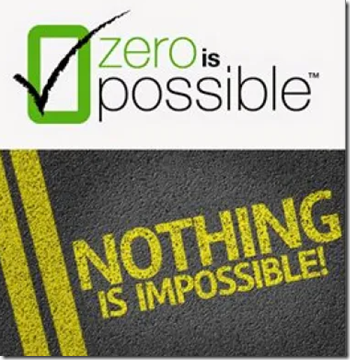Culture Silences in Safety, Mythology
 One of the profound weaknesses of how Safety considers culture is its omission of many critical aspects of culture essential for consideration. When your definition of something shapes misunderstanding you can be sure that whatever the strategy, it won’t work.
One of the profound weaknesses of how Safety considers culture is its omission of many critical aspects of culture essential for consideration. When your definition of something shapes misunderstanding you can be sure that whatever the strategy, it won’t work.
When an engineering and scientism worldview defines culture it ensures there is no mention of artifacts, symbols, myths, linguistics and religion. These are all essential for understanding culture.
Just look at any so called ‘safety culture survey’ or culture discourse in the safety industry and see how culture is defined. Culture is most often defined as behaviours or systems. My goodness, just have a look at the business called Safety Culture (https://safetyculture.com/ ) and it’s a paperwork checklisting business!
Then ask an anthropologist to define culture and see what you get (https://www.pearsonhighered.com/assets/samplechapter/0/2/0/5/0205260012.pdf ).
But safety isn’t interested in things it can measure or things it cannot understand. It has no interest in Transdisciplinary conversations (https://safetyrisk.net/transdisciplinary-thinking-in-risk-and-safety/). After all, what could an anthropologist contribute to safety?
So, Safety imagines the world according to its own limitations and own definitions. Then it wonders why nothing changes.
Let’s just take one of the essentials in culture omitted from discussion in safety and see where it takes us. Why is a study of mythology essential for understanding culture?
Understanding myth is ‘bread and butter’ work for an anthropologist. Similarly, its connection to religiousness, ritual and symbols. All four are inter connected and interdependent.
The story of a myth is always acted out symbolically in a ritual that is practiced religiously.
But first some definitions. A myth is not a fable, saga, fairy tale, or a legend. Understanding the difference between these is also essential to an anthropological understanding of culture.
A myth is a dramatic story of fantasy in which the energies, appetites and archetypical elements of the human psyche are projected in symbolic form and enacted ritually. The meaning and purpose of the myth is symbolically true, real and significant.
A fable is told to exemplify and enforce a moral lesson, usually involving animals that represent various types of human folly or wisdom.
A fairy tale is a fantasy told for entertainment that sometimes overlaps with myth but is never considered symbolically true.
A legend is an imaginative elaboration of a historical event that is embellished to become a symbol for a culture.
In a myth, one considers the meaning of the myth as truthful and real, even though the content of the myth is not historically true. One finds myths throughout all Poetics. And this is why we offer a study of Poetics in the Social Psychology of Risk because a study of Poetics is essential to understanding culture (https://cllr.com.au/product/poetics-flyer-module-22/ ).
Unfortunately, the patronizing attitude of engineering, scientism and safety to myths misses completely their significance.
How fascinating that the zero community that speaks so much of ‘belief’ (https://safetyrisk.net/believe-the-impossible-and-speak-nonsense-to-people/; https://safetyrisk.net/safety-for-true-believers/ ) has no interest in the nature of belief and unbelief nor the role myths, rituals and symbols play in confirming belief or unbelief.
When you look at travel brochures and marketing we see mythology in action. The travel agency offers us more than a holiday. Read any of the material and your holiday get away (https://www.helloworld.com.au/store/varsity-lakes/online-brochures ) is paraded as a ‘paradise’, ‘adventure of a life time’, ‘a dream’ or a ‘loving experience’. The reality the travel agency offers is not actually true but it is true, as a myth. Myths sell holidays
Many of the stories that are told about war such as the heroics of Simpson and the Donkey are not historically true but are mythically true (https://catalogue.nla.gov.au/Record/5787125 ). If you take any historical assessment to the myth of Simpson and the Donkey, most of it is not true. However, is the compassion of the story true? Is the sacrifice for others in war true? Of course, the meaning of the myth is what makes it significant and symbolically true.
The French writer Albert Camus argued that a great deal of modern life is comparable to the senseless absurdity of the fate of Sisyphus, who, in the ancient Greek myth, was condemned by the gods to push a rock to the top of a mountain only to have it roll down the bottom when the pointless labour began again of rolling it to the top. Camus’ novel The Plague (https://www.worldcat.org/title/plague/oclc/827224736 ), so relevant to our pandemic times, is the story of trying to find our way through the absurdities of pandemic living in the face of death.
So then to safety.
- What acts and beliefs in safety are not real or true but made mythically true?
- What symbols serve to focus a belief but are neither true nor effective?
- What symbols and myths in safety create comfort and confirmation but actually don’t work?
- Think of an act that is undertaken repeatedly and cannot be ignored, is it a ritual?
- What acts are undertaken religiously and are symbolized (eg risk matrix) yet have no meaning?
- What acts are attributed as being effective but are merely symbolic?
- How much of your incident investigation is ‘for show’ but never gets to the culture behind the incident?
- How do you define culture? Does it include an understanding of myth, artefacts, linguistics, symbols, rituals, religiousness in belief?
- What acts and processes are projected as ‘saving’ acts and without them people will die?
- If safety ‘saves lives’ how does this salvation language manifest in myths and symbols? (https://safetyrisk.net/why-myths-in-safety-work/ )



Do you have any thoughts? Please share them below